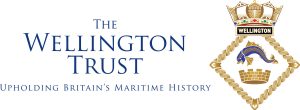Dr David Parry MA PhD presents The Perisher Story.
Rear Admiral John Kingwell presents the untold story of the RN Task Force off Libya in 2011 - Maritime Strike.
Marine artist John M. Horton highlights the history of Canada’s various war art programmes from the First and Second World Wars to the present day.
Colonel David Vassallo presents an illustrated talk celebrating the 80th anniversary of Operation Pedestal and the safe arrival of the tanker SS Ohio in Grand Harbour, Malta on 15 August 1942.
Paris Mangriotis, presents the technical challenges involved in removing the wreck of the Costa Concordia from its location on the Tuscan island of Giglio over a two year period from 2012 to 2014.
Rob Smith presents a Virtual Tour telling the story of 12 ships that have sunk in the Thames. From a Roman cargo ship to a mysterious sinking in the Cold War along with a collection of pictures and maps from the Thames.
Glyn L Evans presents an Allied mission in 1942 sending the fishing boat, Arthur, with two x 2 man submersible ‘chariots’ from Shetland, across the North Sea and into Trondheim Fjord, Norway, to sink the heavily defended German battleship, Tirpitz.
Alastair Chapman presents a historical and current background to the European and North Atlantic fishing industry.
Senior Curator, Susie Cox, takes us on a richly illustrated tour of the P&O Heritage Collection and the treasures to be found within it.
Captain Simon Quail Master Mariner presented his encounters with these engineering marvels, both from the sea and the land. Simon tells fabulous stories of those brilliant engineers who built these sentinels against the storm.
Simon Stephens, Curator of the Ship Model and Boat Collections at The National Maritime Museum joined us to present the world's largest collection of ship models numbering c.4600 and ranging in date from 1800BC to the present.
Rear Admiral John Lang DL reflects on the perils of WWII. Churchill said “Battles might be won or lost, enterprises succeed or miscarry, territories might be gained or quitted, but dominating all our power to carry on the war, or even keep ourselves alive, was our mastery of the ocean routes and the free approach and entry to our ports ……. the only thing that ever frightened me during the war was the U boat peril.”
Howard MacKenzie-Wilson presents the Jubilee Sailing Trust’s three-masted barque TENACIOUS – her construction and 21 years of round the world service, including her current deployment on a six-month charter to the Royal Navy. The first square-rigged sail training for the Royal Navy since Jacky Fisher paid off the inshore squadron of brigs in 1903.
From the earliest known chart of 1275 to the extraordinary charting of the world by the Royal Navy during the 19th and 20th centuries, author and maritime historian, Lieutenant Commander John Blake FRIN RN, shares his incomparable knowledge of sea charts in this fascinating presentation.
John is also a Fellow of the Royal Institute of Navigation and a member of the Society of Authors.
A selection of 7 stories sent in by Friends and colleagues, Personal recollections to fascinate, entertain and inspire you...
Asif Shakoor, an independent scholar is interviewed by Dr Georgie Wemyss on the stories of his grandfather Mahomed Gama and BAME seafarers.
HCMM’s Past Masters, Captain Malcolm W. Parrott and Captain John R. Freestone present a history of transiting from the Atlantic to the Pacific (and vice versa) from the very first crossing by a European, when the Spanish explorer, Balboa, gazed at the Pacific Ocean from the heights of Darien to today’s modern, large and shiny new Panama Canal.
Jenny Moseley, Deputy Chair of the Friends and Trustee of the Wellington Trust presents the history of The Vickers Vimy. In 1919 and 1920, a Vimy flew from London to Australia, London to Cape Town, and across the Atlantic with Alcock and Brown. This presentation is about the re-enactment of the Vickers Vimy flights – the modern day trials and tribulations, including a plague in India and a crash in Indonesia, and another in Africa.
Dr Aaron Jaffer, Curator of World History & Cultures, Royal Museums Greenwich, explores the lives of Indian Ocean seafarers, or ‘lascars’, employed aboard British sailing ships during the eighteenth and nineteenth centuries.
Dr Margarette Lincoln, Exhibition Lead Trustee of The Wellington Trust, discusses the Golden Age of Piracy. A fascinating talk about how pirates were portrayed in their own time, in prints, ballads, trial reports, and early novels.
Simon Stephens, Curator of the Ship Model and Boat Collections at The National Maritime Museum gives us an illustrated talk touching upon the history of the buildings and formation of the collections. This is followed by a number of the most iconic objects selected from a curatorial perspective.
Kevin Maynard, Station Manager at the RNLI Tower Station, discusses how the RNLI works and how it is funded. Kevin provides fascinating insight into how the RNLI are crewed and alerted when they are needed. With actual footage of the types of incidents the lifeboat gets called to.
Richard Shuttleworth served on three ships operating from the West Indies to the Far East. Richard takes us back to 11 November 1940 and discusses The Battle of Taranto (Operational Judgement).
John Johnson-Allen who holds an MA in Maritime History takes us on the Cruise of the Ophir: the Royal Tour of 1901.
Dr Paul Stott, Senior Lecturer in Marine Production asks, Whatever happened to our Shipbuilding industry?
Hannah Cunliffe, Director, National Historic Ships UK discusses Maritime Heritage in the UK Achievements & Challenges around our Coast.



























